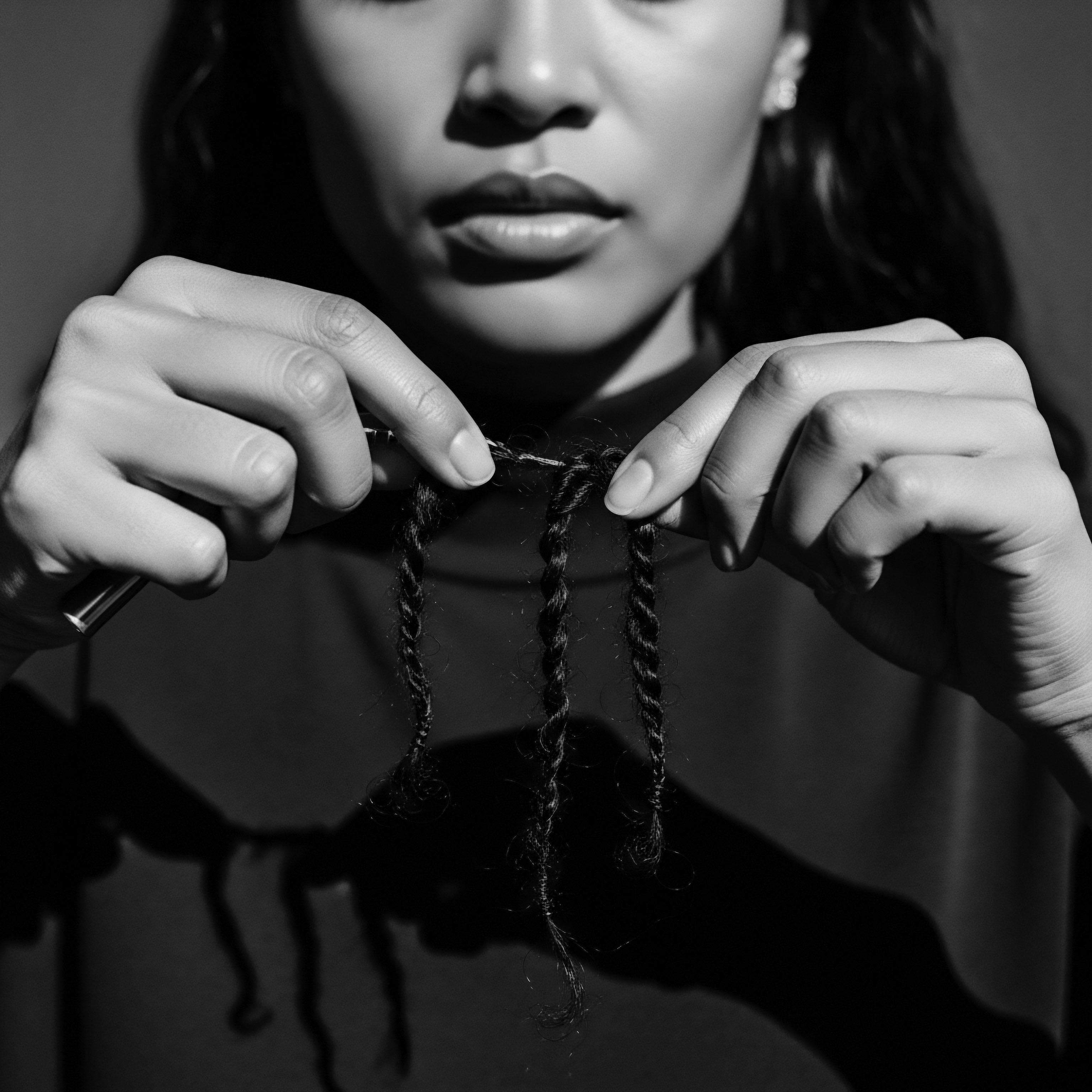
Fundamentals
The concept of Hair Wellness Legacy, within Roothea’s living library, represents far more than a mere collection of practices for hair health. It is a profound acknowledgment of the deep, enduring wisdom inherited across generations, particularly concerning the unique requirements and spiritual resonance of Textured Hair. This understanding begins not with modern formulations, but with the very breath of ancestral knowledge, echoing from the source of humanity’s earliest engagements with the natural world and its gifts for sustenance and adornment. The Hair Wellness Legacy, at its simplest, is the accumulated, transmitted body of knowledge, rituals, and philosophical stances surrounding the care and symbolic significance of hair, especially as it pertains to the coiled, kinky, and wavy textures that distinguish so many lineages of African and mixed-race descent.
This initial understanding of Hair Wellness Legacy finds its earliest expressions in the communal hearths and sacred spaces of pre-colonial African societies. Before the profound disruptions of transatlantic movements, hair was not simply a physical attribute; it served as a living canvas, a communicative tool, and a spiritual conduit. The Meaning of hair was deeply interwoven with an individual’s identity, signifying their age, marital status, tribal affiliation, social standing, wealth, and even religious devotion. Hairstyles were intricate messages, often taking days to complete, and involved the collective effort of family and community members.
This communal aspect fostered bonds, transforming hair care into a cherished social ritual. The meticulous processes of washing, oiling, braiding, twisting, and decorating hair with natural elements like shells, beads, and precious metals, were not merely aesthetic pursuits; they were acts of reverence for the self and connection to the spiritual realm.
The Hair Wellness Legacy is the ancestral wisdom, rituals, and profound understanding of textured hair’s health and symbolic importance, passed through generations.
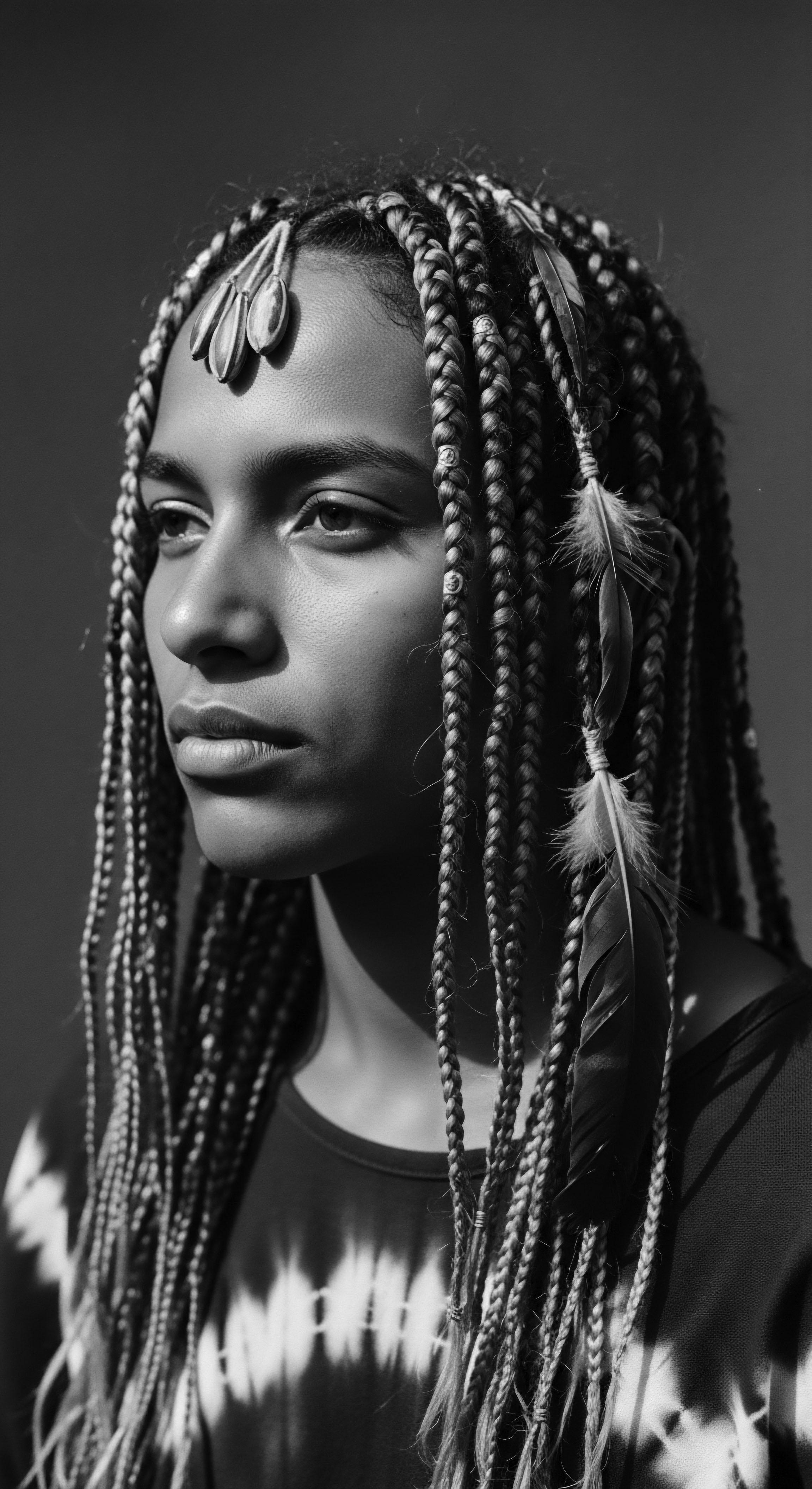
Echoes from the Source ❉ Ancient Practices and Elemental Biology
The foundational tenets of Hair Wellness Legacy are rooted in an elemental appreciation for hair’s biological structure and its relationship with the natural environment. Ancient African communities possessed an intuitive grasp of what nourished and protected their hair. They recognized that the unique coiling patterns of textured hair, while offering distinct beauty and resilience, also presented particular needs for moisture and protection from environmental elements.
The sun, the dust, the daily rhythms of life—all informed the development of practices designed to maintain vitality and strength. The Delineation of these early practices highlights a deep respect for the intrinsic properties of the hair strand itself, understanding it not as something to be tamed or altered, but as a part of the body to be honored and sustained.
For instance, the use of natural ingredients such as shea butter, derived from the karite tree, or various indigenous oils and herbs, speaks to an ethnobotanical wisdom cultivated over millennia. These substances provided deep moisture, sealed the cuticle, and offered protective barriers against the harshness of the climate. The consistent application of these emollients, often through deliberate massage into the scalp, promoted circulation and overall scalp health, recognizing that a healthy scalp is the bedrock of vibrant hair. This systematic approach to care, grounded in readily available natural resources, formed the practical Description of hair wellness for these early communities.
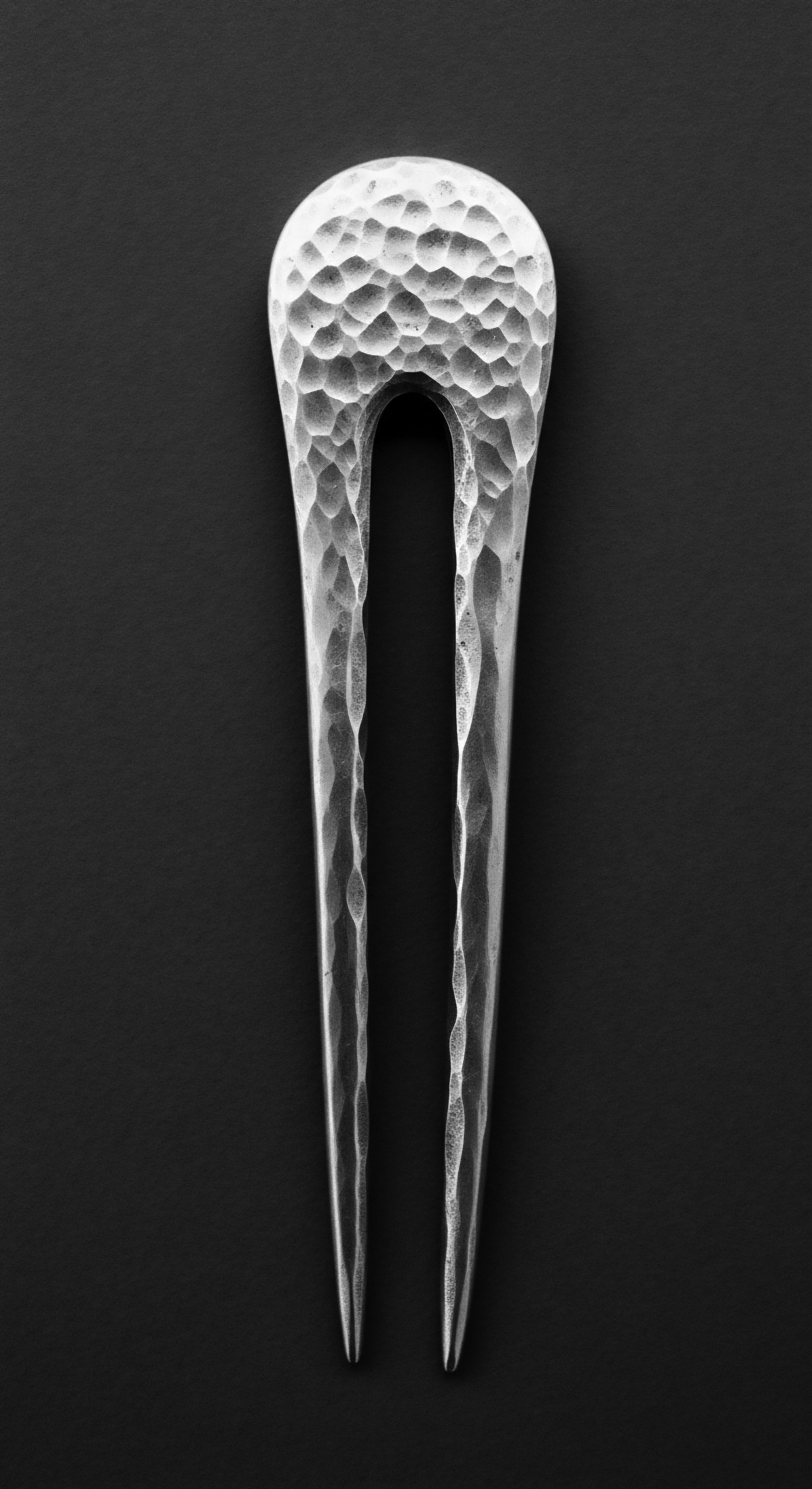
Hair as a Spiritual and Social Compass
Beyond the physical care, the Hair Wellness Legacy encompassed a spiritual and social framework. In many West African traditions, the head was regarded as the most elevated part of the body, a sacred vessel for spiritual energy and a direct connection to the divine and ancestral spirits. The way hair was styled could, for example, communicate messages to the gods among the Yoruba people.
This perspective instilled a profound reverence for hair, making its care a spiritual undertaking, a meditative act of connection to something greater than oneself. The intricate patterns of braids and cornrows, often symbolizing complex narratives or social standings, served as a visual language, allowing individuals to communicate their status, achievements, or life stages without uttering a single word.
The Interpretation of hair in these contexts extended to its very presence or absence. A well-maintained, styled head of hair often signified prosperity, health, and a balanced spirit. Conversely, an “undone” appearance might suggest grief, illness, or distress, as seen in some Nigerian communities.
This holistic view, where the physical state of hair mirrored the internal and communal well-being, forms a fundamental aspect of the Hair Wellness Legacy. It illustrates how hair care was never isolated but was always a part of a larger cultural and spiritual ecosystem.
The early understanding of Hair Wellness Legacy, therefore, is an intricate blend of practical care, spiritual reverence, and social communication. It is a testament to the ingenuity and profound connection to nature held by ancestral communities, laying the groundwork for the enduring traditions that continue to shape textured hair care today.
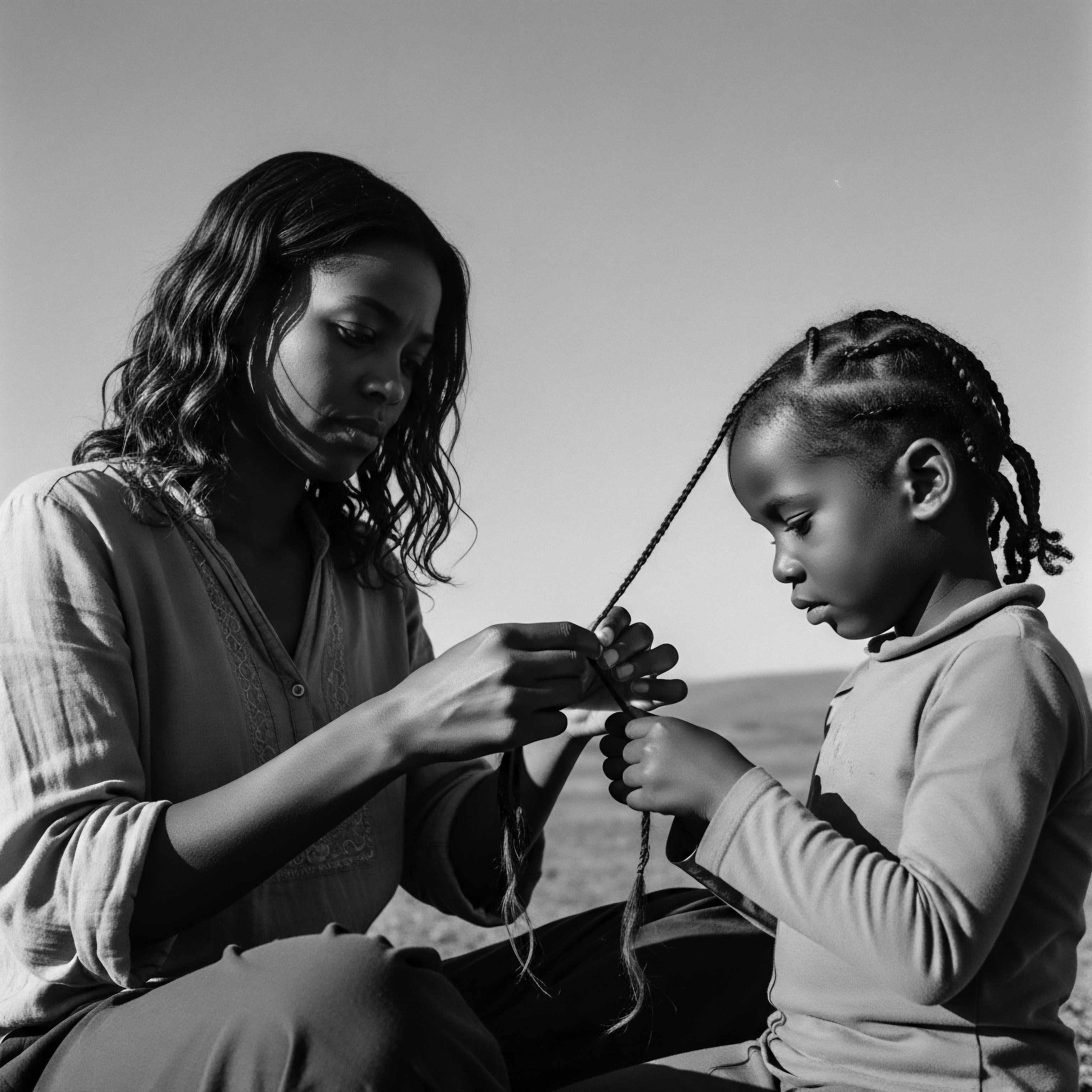
Intermediate
Building upon the foundational insights of ancestral practices, the intermediate understanding of Hair Wellness Legacy deepens its Meaning by exploring how these heritage practices have been passed down, adapted, and sometimes challenged through historical epochs. This layer of comprehension focuses on the dynamic journey of textured hair care, particularly within Black and mixed-race communities across the diaspora, where resilience and adaptation became cornerstones of preserving identity. The Hair Wellness Legacy, at this stage, reveals itself as a living, breathing archive, constantly evolving yet firmly anchored in the wisdom of its origins. It encompasses the ingenious methods devised to maintain hair health amidst adversity, and the ways in which hair became a silent, yet powerful, expression of cultural continuity.
The transatlantic passage and subsequent periods of enslavement and colonialism introduced profound ruptures in the inherited traditions of hair care. Stripped of their tools, traditional ingredients, and the communal time for elaborate styling, enslaved Africans faced immense challenges in maintaining their hair. Their heads were often forcibly shaved upon arrival, a deliberate act designed to dehumanize and erase their cultural identity. Despite these calculated efforts to sever connections to their homeland, the spirit of the Hair Wellness Legacy persisted.
Enslaved people adapted, utilizing what little was available to them – sometimes bacon grease, butter, or kerosene – to tend to their hair, even if these substitutes were far from ideal. This period saw the clandestine preservation of techniques, such as braiding, which became acts of quiet resistance and cultural preservation. For instance, some African women, particularly rice farmers, braided rice seeds into their hair before being transported, a testament to their foresight for survival and cultural continuity.
The Hair Wellness Legacy persisted through immense adversity, as enslaved Africans adapted traditional practices and used hair as a quiet act of cultural preservation.

The Tender Thread ❉ Adaptation and Resistance in Care
The continuity of Hair Wellness Legacy through the diaspora is a testament to extraordinary human ingenuity and resolve. Hair care rituals, once communal and celebrated, became more private, often carried out in stolen moments or during the precious reprieve of Sundays. “Aunt Tildy” Collins, a formerly enslaved woman, recounted her mother and grandmother preparing her hair for Sunday school, using a “jimcrow” comb before threading or plaiting her hair with fabric or cotton to achieve defined curls.
These were not merely acts of grooming; they were profound moments of connection, transmitting knowledge, comfort, and a sense of self-worth in dehumanizing circumstances. This is the practical Explanation of how care traditions survived and transformed, often through whispered wisdom and tactile instruction from elder to younger.
The imposition of Eurocentric beauty standards during and after slavery profoundly impacted the perception of textured hair. Tightly coiled hair was frequently pathologized, labeled with derogatory terms like “nappy” or “kinky,” and deemed inferior or unprofessional. This systemic denigration created a deeply ingrained belief, sadly perpetuated through generations, that straight hair was the ideal. The pursuit of “good hair” – meaning straighter hair – became linked to social acceptance and economic opportunity, leading to widespread use of hot combs, flat irons, and harsh lye-based chemical relaxers.
Yet, within this challenging landscape, resistance simmered and eventually erupted. The mid-20th century saw the emergence of the natural hair movement, particularly during the Civil Rights and Black Power movements. The Afro hairstyle, a voluminous display of natural texture, became a potent political statement, a symbol of Black Pride and a reclamation of cultural heritage.
This shift marked a conscious decision to break free from imposed beauty norms and to honor the inherent beauty of textured hair. This period signifies a critical evolution in the Hair Wellness Legacy, where the focus broadened from mere survival to active celebration and defiance.
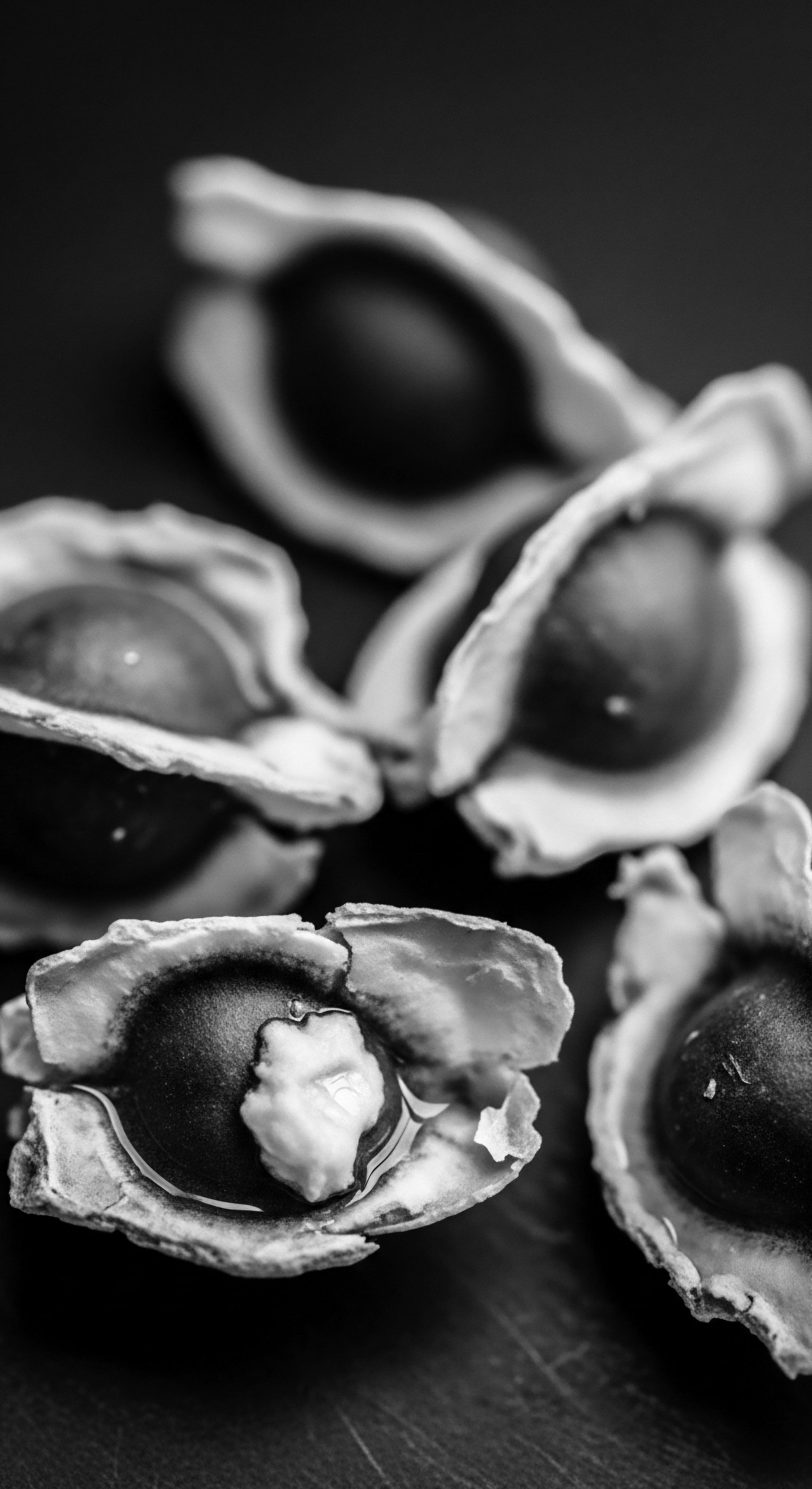
Traditional Ingredients and Their Enduring Place
The Hair Wellness Legacy continues to champion the use of natural ingredients, a direct lineage from ancestral practices. Even as modern products proliferated, the wisdom of botanicals endured. Consider the widespread reverence for certain plant-based ingredients:
- Shea Butter ❉ Extracted from the nuts of the African shea tree, this rich emollient has been used for centuries to moisturize, protect, and soften hair and skin. Its fatty acid composition provides deep nourishment, a consistent element in traditional care.
- Coconut Oil ❉ A versatile oil, historically used for its conditioning and protective qualities, particularly in coastal African communities and across the diaspora. It helps seal moisture and add a natural sheen.
- Aloe Vera ❉ Valued for its soothing and hydrating properties, the gel from this plant has been applied to the scalp to calm irritation and condition hair.
- Rooibos Tea ❉ In South Africa, this indigenous plant has found its way into hair care rituals, recognized for its potential rejuvenating properties.
These natural remedies, often passed down through oral tradition and hands-on teaching, underscore the enduring relevance of ancestral knowledge in contemporary hair wellness. The continued reliance on these ingredients highlights a desire to connect with practices that have proven their worth over centuries, a tangible link to the heritage of hair care.
The intermediate understanding of Hair Wellness Legacy thus illuminates a narrative of adaptation, resilience, and quiet revolution. It speaks to how communities maintained their connection to their hair’s inherent qualities and cultural significance, even when faced with immense pressure to conform. This journey from survival to celebration forms a vibrant chapter in the ongoing story of textured hair.
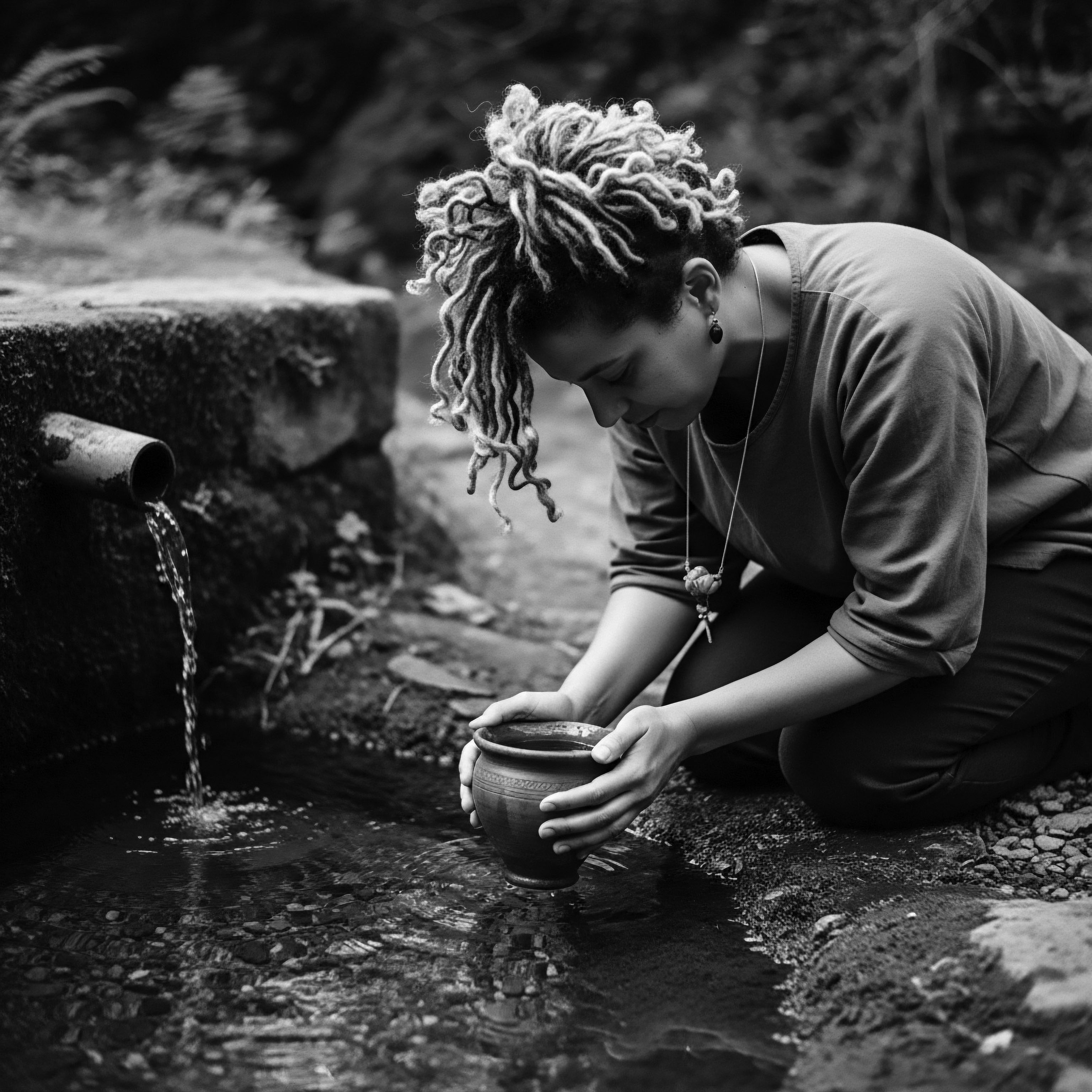
Academic
The Hair Wellness Legacy, viewed through an advanced academic lens, represents a sophisticated, interdisciplinary concept that transcends mere aesthetic concern, embodying a profound interplay of biological realities, historical forces, anthropological insights, and sociopsychological dynamics. It is the comprehensive understanding of how the inherent characteristics of Textured Hair—its unique follicular structure, curl pattern, and susceptibility to specific environmental and mechanical stressors—are inextricably linked to a rich, often contested, cultural heritage. This advanced Definition acknowledges that for Black and mixed-race communities, hair wellness is not a static state but a continuous, living dialogue between ancestral wisdom, lived experience, systemic oppression, and contemporary self-determination. It is a statement of identity, resilience, and an ongoing reclamation of agency.
From a theoretical perspective, the Hair Wellness Legacy functions as a critical framework for analyzing the historical pathologization of textured hair. European colonizers, through the transatlantic slave trade, deliberately imposed beauty standards that devalued coiled and kinky hair, deeming it “uncivilized” or “animal-like.” This ideological conditioning served to justify enslavement and racial hierarchies. The consequence of this historical narrative is evident in contemporary patterns of hair care and perception.
A 2023 survey study, for instance, revealed a powerful, yet disheartening, statistical reality ❉ 61% of Black Respondents Reported Using Chemical Straighteners Because They “felt More Beautiful with Straight Hair.” This figure is not merely a data point; it is a stark illustration of the internalized impact of centuries of Eurocentric beauty mandates, underscoring how the legacy of oppression continues to shape individual choices and perceptions of self-worth within the Hair Wellness Legacy. This particular statistic speaks to the profound, generational psychological burden placed upon textured hair, a burden that the Hair Wellness Legacy seeks to understand, address, and ultimately dismantle through knowledge and affirmation.

Anthropological Dimensions of Hair as Cultural Capital
Anthropological inquiry into the Hair Wellness Legacy reveals hair as a potent form of cultural capital, a visible marker of belonging, resistance, and social negotiation. In pre-colonial African societies, hair was a sophisticated communication system, with specific styles conveying marital status, age, social rank, and even religious affiliation. The elaborate hairstyles of the Yoruba, for example, were not just decorative; they symbolized community roles and spiritual connections. This intricate semiotics of hair was systematically disrupted during slavery, where the forced shaving of heads aimed to erase identity and cultural memory.
Yet, even under extreme duress, the Hair Wellness Legacy found ways to persist. The practice of braiding rice seeds into hair by West African women before their forced displacement to the Americas is a poignant example of using hair as a repository of knowledge and a tool for survival. This historical act demonstrates how hair became a mobile archive, carrying not only genetic information but also cultural narratives and the very means of survival across continents.
The enduring Significance of these ancestral practices extends into the modern era, manifesting in the resurgence of natural hair movements. These movements are not merely trends; they represent a conscious reassertion of identity and a rejection of colonial beauty paradigms. They are a collective endeavor to reconnect with the Hair Wellness Legacy, validating textures and styles historically marginalized.
This cultural shift reflects a growing awareness that true hair wellness involves not only physiological health but also psychological well-being and cultural affirmation. The deliberate choice to wear natural styles like locs, braids, and Afros becomes a public declaration of heritage, a powerful statement against systemic discrimination that persists in workplaces and educational institutions.
The Hair Wellness Legacy provides a critical framework for understanding how textured hair’s biological realities intertwine with its contested cultural heritage and sociopsychological dynamics.
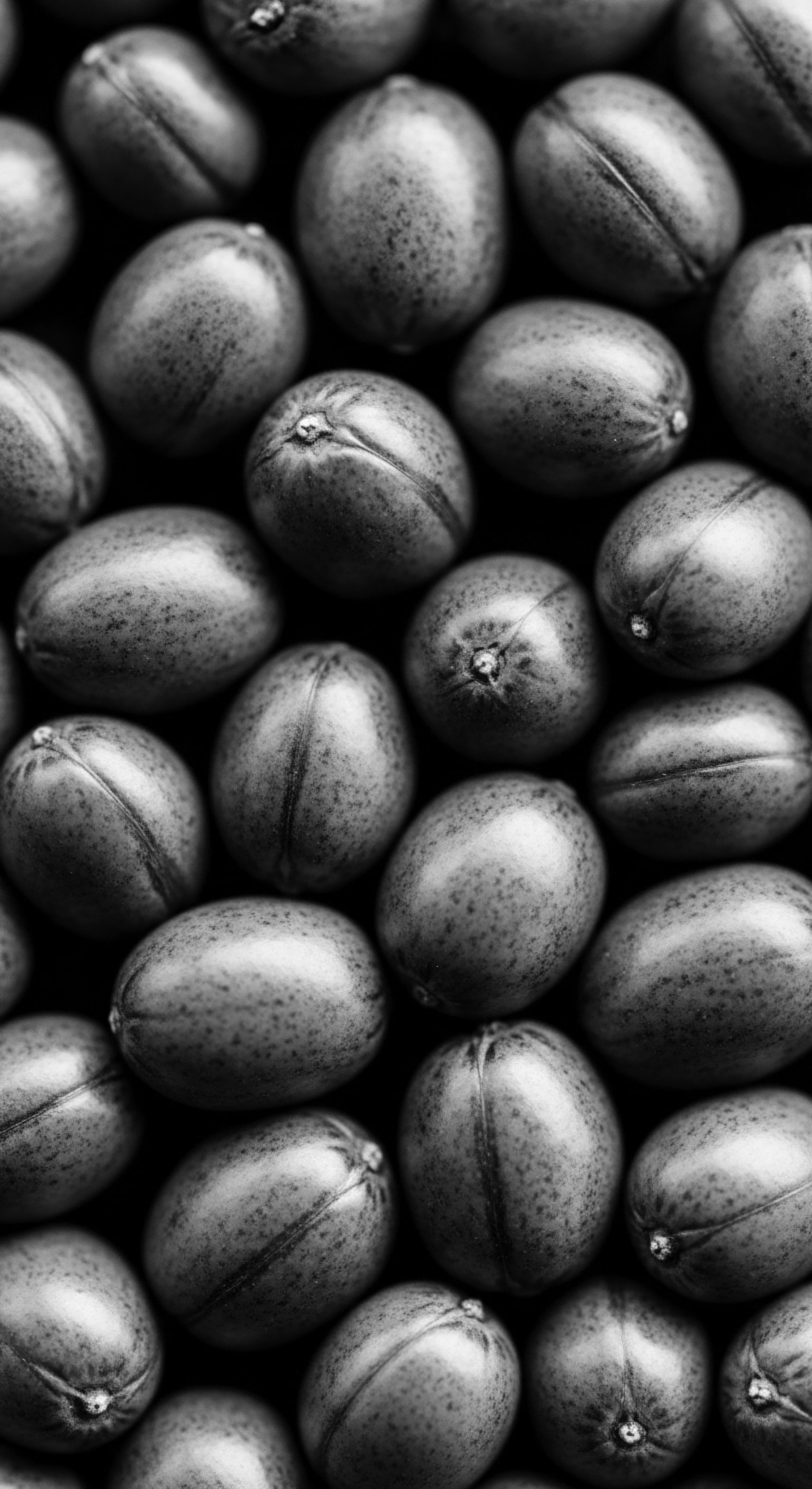
Scientific Validation and the Biocultural Nexus
From a scientific perspective, the Hair Wellness Legacy prompts an exploration of the unique biological properties of textured hair and how modern science can validate or expand upon ancestral care practices. Afro-textured hair, characterized by its elliptical follicle shape and tight helical structure, is inherently prone to dryness and breakage due to its fewer cuticle layers and the difficulty of natural oils (sebum) traveling down the coiled strand. This scientific understanding provides a contemporary Elucidation for why ancestral practices, such as consistent oiling and protective styling, were so effective. The traditional use of rich butters and plant-based oils, like shea butter or coconut oil, provided the necessary emollience and sealing properties to counteract moisture loss and reduce friction, thus minimizing breakage.
The Hair Wellness Legacy encourages a biocultural approach to hair science, where biological realities are understood within their cultural contexts. For example, ethnobotanical studies document numerous African plants traditionally used for hair treatment, many of which possess properties that modern research is now beginning to investigate for their anti-inflammatory, antimicrobial, or growth-promoting effects. The plant families Lamiaceae, Fabaceae, and Asteraceae, for instance, are frequently recorded in African hair care practices, with some species showing potential as antidiabetic treatments when taken orally, hinting at a systemic connection between overall wellness and hair health that ancestral wisdom implicitly understood. This convergence of ancient knowledge and contemporary scientific inquiry provides a deeper Description of hair wellness, moving beyond superficial appearance to address the fundamental health of the strand and scalp.
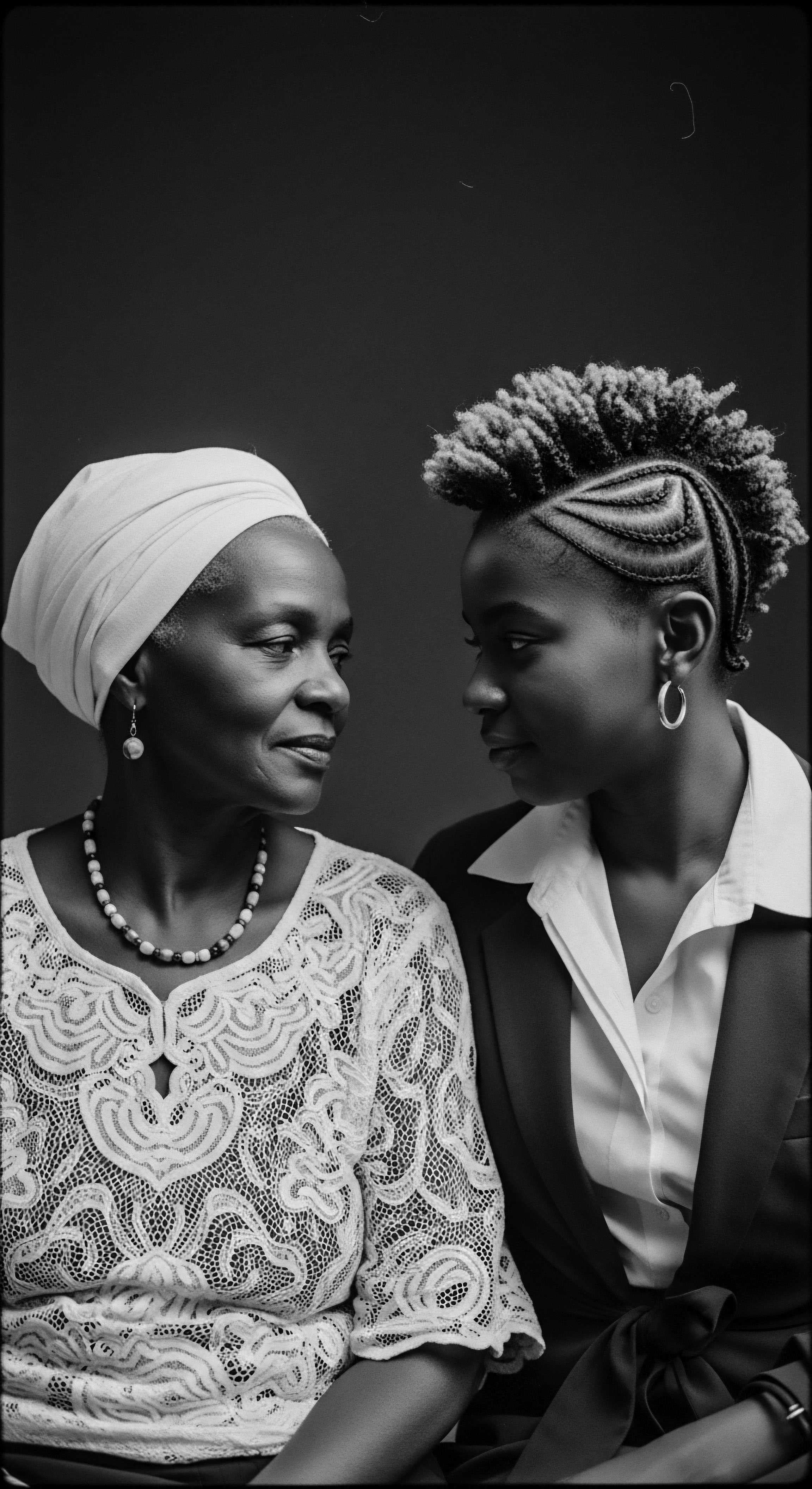
Long-Term Consequences and Future Insights
The long-term consequences of neglecting the Hair Wellness Legacy are multifaceted, extending beyond physical damage to psychological and economic detriment. The pervasive pressure to conform to Eurocentric beauty standards has led to widespread use of chemical straighteners and tension-inducing styles, contributing to conditions like traction alopecia and other forms of hair loss prevalent in Black women. This not only affects physical health but also perpetuates a cycle of self-perception rooted in inadequacy, hindering genuine self-acceptance.
The Hair Wellness Legacy, therefore, is not merely about preserving old ways; it is about providing a robust framework for future success and well-being, both individually and communally. Understanding this legacy allows for the development of hair care solutions that are genuinely attuned to the biological and cultural needs of textured hair, fostering self-love and confidence.
The application of this advanced understanding informs innovation in product development, emphasizing formulations that respect the inherent structure of textured hair and draw upon traditional ingredients validated by scientific inquiry. It also guides policy changes, such as the CROWN Act in the United States, which aims to prohibit discrimination based on hair texture and protective hairstyles. Such legal frameworks are a direct response to the historical and ongoing impact of devaluing textured hair, reinforcing the Hair Wellness Legacy’s aspiration for a future where hair is a source of unburdened pride. The ongoing dialogue between scientific discovery and ancestral knowledge promises a future where hair wellness is truly holistic, recognizing the hair strand as a repository of history, a symbol of identity, and a vibrant expression of cultural heritage.
The Hair Wellness Legacy, in its most academic articulation, represents a continuous journey of discovery and affirmation. It calls for a profound appreciation of textured hair’s intricate biology, a respectful engagement with its rich historical narratives, and a commitment to fostering environments where every coil, curl, and wave is celebrated as a testament to an enduring heritage.
| Aspect of Care Moisture Retention |
| Ancestral Practice (Pre-Colonial/Slavery) Regular application of indigenous plant oils (e.g. shea butter, coconut oil) and natural butters, often through communal oiling rituals. |
| Modern Adaptation (Post-Natural Hair Movement) Use of leave-in conditioners, deep conditioning treatments, and sealing oils specifically formulated for textured hair, often containing similar natural ingredients. |
| Aspect of Care Protective Styling |
| Ancestral Practice (Pre-Colonial/Slavery) Elaborate braiding, threading, and twisting styles (e.g. cornrows, Bantu knots) that minimized manipulation and protected the hair from environmental elements. |
| Modern Adaptation (Post-Natural Hair Movement) Contemporary protective styles like box braids, twists, and locs, often enhanced with extensions, designed to reduce breakage and promote length retention. |
| Aspect of Care Cleansing & Scalp Health |
| Ancestral Practice (Pre-Colonial/Slavery) Use of natural clays, herbal infusions, and plant-based washes to cleanse the scalp and hair, promoting a healthy growth environment. |
| Modern Adaptation (Post-Natural Hair Movement) Sulfate-free shampoos, co-washes, and scalp treatments that prioritize moisture and maintain the scalp's natural balance. |
| Aspect of Care Adornment & Expression |
| Ancestral Practice (Pre-Colonial/Slavery) Incorporation of beads, shells, cowrie shells, and metals into hairstyles to signify status, age, or spiritual connection. |
| Modern Adaptation (Post-Natural Hair Movement) Use of hair jewelry, wraps, and vibrant colors to express personal style, cultural pride, and contemporary aesthetics. |
| Aspect of Care This table illustrates the continuous thread of Hair Wellness Legacy, where ancient principles of care persist and are reimagined in contemporary practices, honoring the enduring heritage of textured hair. |
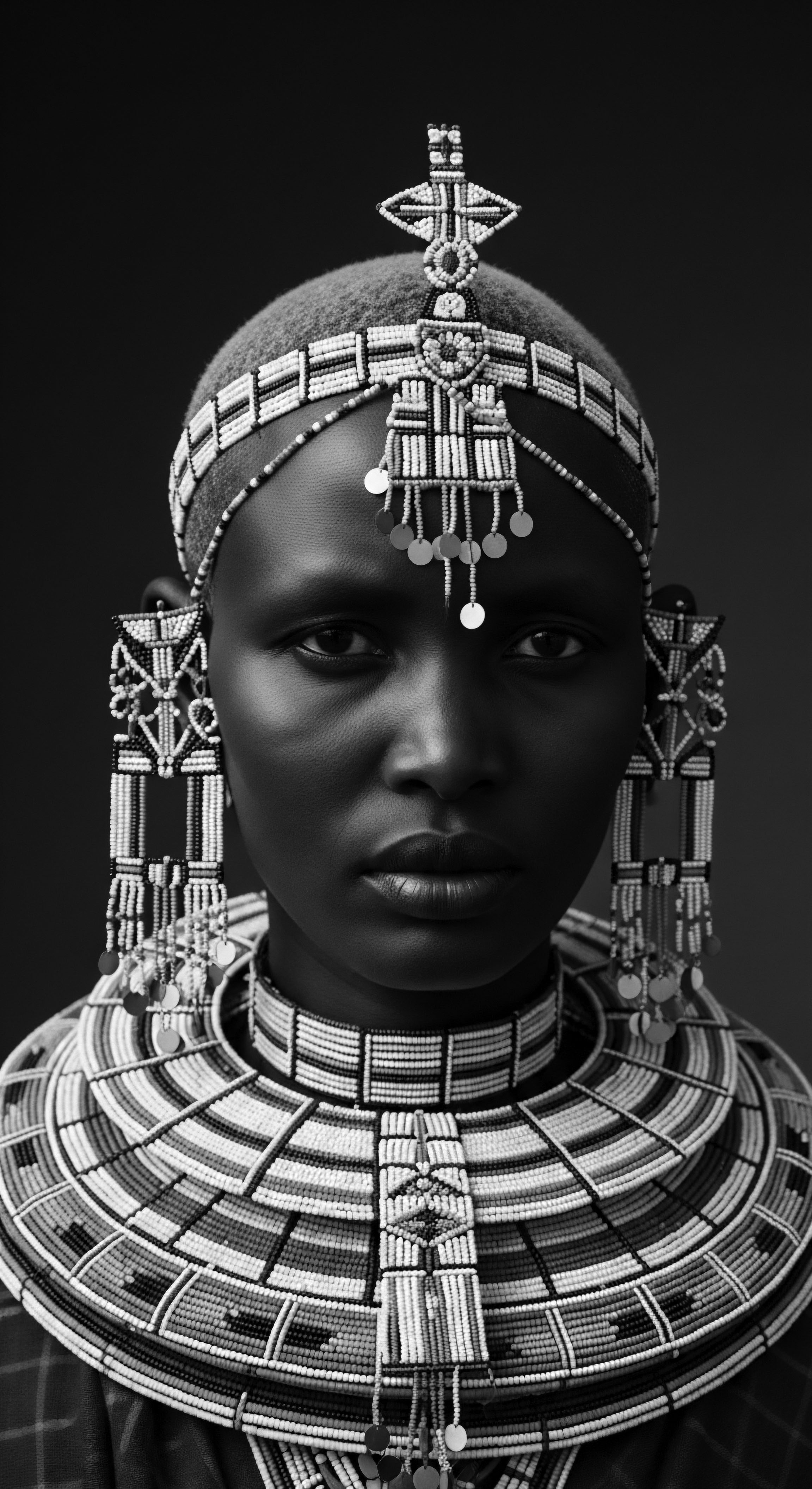
Reflection on the Heritage of Hair Wellness Legacy
The journey through the Hair Wellness Legacy is more than an academic exercise; it is a heartfelt recognition of the profound spirit that resides within each strand of textured hair. This legacy is a living testament to resilience, a vibrant continuum connecting elemental biology with the deepest expressions of human identity and cultural pride. It speaks to the enduring wisdom of ancestors who understood hair not as a mere adornment, but as a sacred extension of self, a conduit for spiritual connection, and a canvas for communal narratives. The story of textured hair, particularly for Black and mixed-race communities, is a powerful chronicle of survival, adaptation, and triumph against forces that sought to diminish its inherent beauty and cultural weight.
The ‘Soul of a Strand’ ethos, therefore, finds its fullest expression in this understanding. It invites us to listen to the whispers of history carried within each coil and curl, to honor the hands that meticulously cared for hair in times of both celebration and profound hardship. It is a call to recognize that true hair wellness extends beyond product application; it encompasses a holistic reverence for one’s ancestral lineage, a deep respect for the journey of those who came before, and an unwavering affirmation of the beauty that resides in authenticity.
The Hair Wellness Legacy compels us to remember that the care of textured hair is an act of self-love, a celebration of heritage, and a powerful statement of continuity in a world that often seeks to standardize. It is a promise to future generations that their coils, kinks, and waves will be understood, celebrated, and cherished as invaluable components of their living heritage.
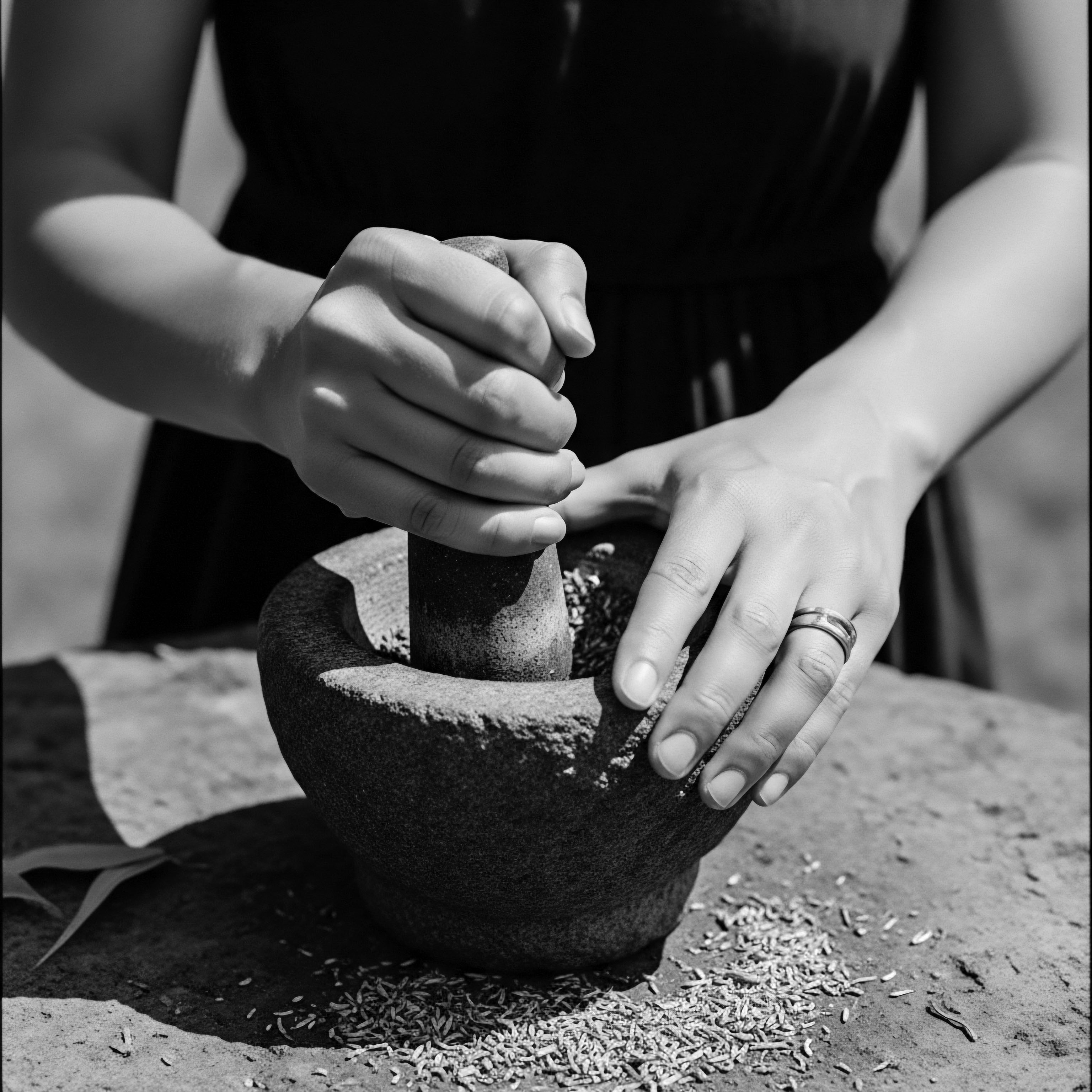
References
- Byrd, A. D. & Tharps, L. L. (2002). Hair Story ❉ Untangling the Roots of Black Hair in America. St. Martin’s Press.
- Sherrow, V. (2006). Encyclopedia of Hair ❉ A Cultural History. Greenwood Press.
- Banks, I. (2000). Hair Matters ❉ Beauty, Power, and Black Women’s Consciousness. NYU Press.
- Jacobs-Huey, L. (2006). From the Kitchen to the Parlor ❉ Language and Becoming in African American Women’s Hair Care. Oxford University Press.
- Ellington, T. N. (Ed.). (2020). Black Hair in a White World. The Kent State University Press.
- Essel, O. Q. (2023). Conflicting Tensions in Decolonising Proscribed Afrocentric Hair Beauty Culture Standards in Ghanaian Senior High Schools. Journal of Culture and Education, 1(1), 1-18.
- McMichael, A. J. (2003). Hair and Scalp Disorders in African American Women. Dermatologic Clinics, 21(4), 669-679.
- Essel, O. Q. (2023). The SAGE Encyclopedia of African Cultural Heritage in North America Hairstyles, Traditional African. SAGE Publications, Inc.
- Hill, D. (2024). Rhetoric of Natural Hair ❉ Cultural Contradictions. Advances in Applied Sociology, 14, 504-516.
- Okwu, D. E. & Okwu, E. (2004). Cosmetopoeia of African Plants in Hair Treatment and Care ❉ Topical Nutrition and the Antidiabetic Connection? Diversity, 16(2), 96.
- Essel, O. Q. (2023). African Hairstyles ❉ Cultural Significance and Legacy. Afriklens.
- King, V. & Niabaly, D. (2013). The Politics of Black Women’s Hair. Journal of Undergraduate Research at Minnesota State University, Mankato, 13, Article 4.
